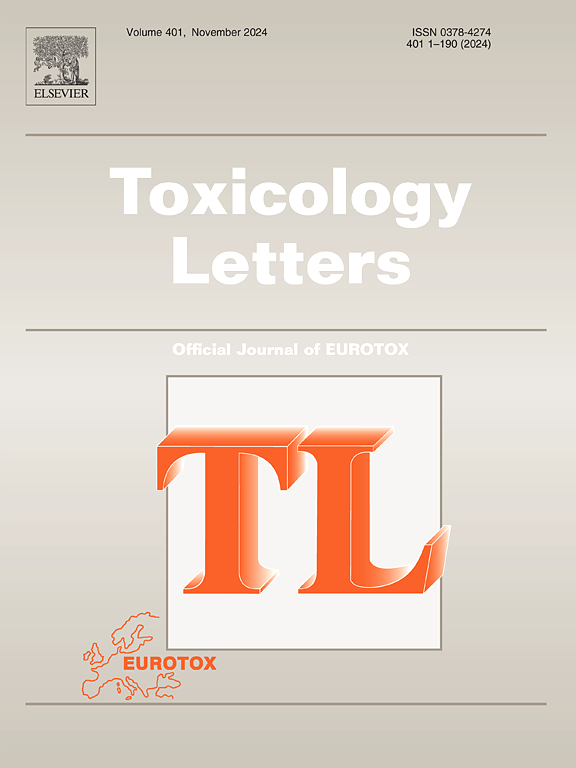Multigenerational toxicity and transcriptomic changes induced by environmentally relevant concentrations of microcystin-LR and -RR in Caenorhabditis elegans
IF 2.9
3区 医学
Q2 TOXICOLOGY
引用次数: 0
Abstract
Microcystin (MC) contamination in surface water is currently receiving considerable attention as a public health concern. Seasonal occurrence MCs in aquatic environment suggests their long-term impacts on ecosystem and human health, whereas multi-generational toxic effects of MCs were poorly investigated. The reproductive system is the second most important target organ of MCs after the liver. In this study, we examined reproductive toxic effects of the two most prevalent MCs (MC-LR and -RR) on three successive generations of Caenorhabditis elegans through parental exposure, and conducted transcriptomic analysis on P0 and F1 worms. Our results show that parts-per-billion levels of MC-LR and MC-RR disrupt germ cell development in both parental worms and non-exposed F1/F2 progeny. Significant up-regulation of antimicrobial peptide genes was observed in parental worms, while F1 offspring exhibited decreased expression levels of cytochrome P450 genes. The findings reveal multi-generational effects of environmentally relevant concentrations of MCs on reproductive system, and illustrate possible transcriptional changes associated with long term toxicity of MCs.
环境相关浓度微囊藻毒素- lr和-RR诱导的秀丽隐杆线虫多代毒性和转录组变化
作为一个公共卫生问题,地表水中的微囊藻毒素污染目前受到相当大的关注。水生环境中MCs的季节性发生表明其对生态系统和人类健康的长期影响,而MCs的多代毒性效应研究较少。生殖系统是MCs的第二大靶器官,仅次于肝脏。本研究通过亲本暴露研究了两种最常见的MCs (MC-LR和-RR)对连续三代秀丽隐杆线虫的生殖毒性作用,并对P0和F1蠕虫进行了转录组学分析。我们的研究结果表明,十亿分之一的MC-LR和MC-RR水平破坏了亲本蠕虫和未暴露的F1/F2后代的生殖细胞发育。亲本线虫抗菌肽基因显著上调,而F1后代细胞色素P450基因表达水平下降。研究结果揭示了环境相关的MCs浓度对生殖系统的多代影响,并说明了MCs长期毒性相关的可能转录变化。
本文章由计算机程序翻译,如有差异,请以英文原文为准。
求助全文
约1分钟内获得全文
求助全文
来源期刊

Toxicology letters
医学-毒理学
CiteScore
7.10
自引率
2.90%
发文量
897
审稿时长
33 days
期刊介绍:
An international journal for the rapid publication of novel reports on a range of aspects of toxicology, especially mechanisms of toxicity.
 求助内容:
求助内容: 应助结果提醒方式:
应助结果提醒方式:


